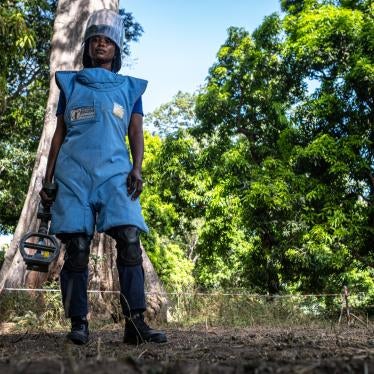Mr. President,
The destruction of 55 million stockpiled antipersonnel landmines under the Mine Ban Treaty is one of its most lasting and life-saving accomplishments. Sri Lanka was the last State Party to complete its obligation to destroy its stocks in October 2021.
Of the 164 States Parties to the Mine Ban Treaty, 161 do not stockpile antipersonnel mines. This includes 94 states that have officially declared completion of stockpile destruction, and 67 which confirmed that they never possessed antipersonnel mines (except for, in some cases, for training in detection and clearance techniques).
Two States Parties possess a combined total of 3.76 million antipersonnel mines left to destroy: Ukraine (3,364,433) and Greece (343,413).
Greece and Ukraine remain not in compliance with Article 4 of the Mine Ban Treaty, having both failed to complete stockpile destruction by their respective four-year deadlines. Greece had an initial deadline of 1 March 2008, while Ukraine’s deadline was 1 June 2010. We look forward to hearing updates from both State Parties
The ICBL regrets that no apparent progress has been made in the past year on this problem. Neither Greece nor Ukraine are able to articulate a deadline for completion of their obligation after 15 years and 13 years respectively.
Furthermore, Tuvalu, which is the only State Party not to submit an initial Article 7 report, must provide an initial transparency report for the treaty to formally confirm that it does not stockpile antipersonnel mines.
Additionally, some States Parties face a situation where non-state armed groups possess stockpiles of improvised antipersonnel mines in territory under their jurisdiction or control. For example, in May 2022, Colombia’s armed forces discovered a stockpile containing 1,984 improvised antipersonnel mines in Puerto Concordia, Meta department. It is not known which armed group had produced or acquired the mines.
We hope that the Mine Ban Treaty President and States Parties, including from the Committee on Cooperative Compliance, can consult and work together to help find creative solutions to support not only Ukraine to complete its stockpile destruction, but also address stockpiles seized from non-state armed groups.
Lastly, we would also like to address the issue of mines retained for training for research and training purposes in accordance with Article 3.
The good news is that 95 States Parties do not retain any antipersonnel mines, including 41 states that once possessed them in the past. This shows how a majority of States Parties now agree that there is no need to use live mines for research and training purposes.
However, 66 States Parties are still retaining mines, of which 25 each retain more than 1,000 mines. At the top of the retention list are Finland and Bangladesh, who are currently retaining more than 12,000 mines each.
Several States Parties have reported notable developments in the past year. Peru and Angola collectively used a total of 1,142 retained mines during 2022, decreasing their retained mines to under 1,000 respectively. Nigeria, which initially declared 3,364 retained mines in 2011, reported having no retained mines in 2022. Nicaragua and Portugal, which also previously reported 435 and 383 retained mines respectively, reported no retained mines in 2022 according to their Article 7 reports.
The ICBL has long expressed concern at the large number of States Parties that are retaining mines but apparently not using them for the permitted purposes. Rather they are simply being stockpiled. All these states should either utilize the mines for permitted purposes or destroy them urgently.
Thank you.







